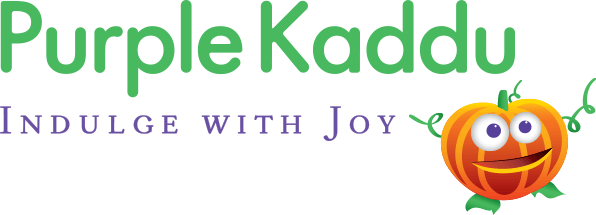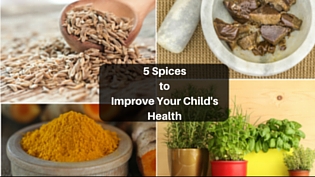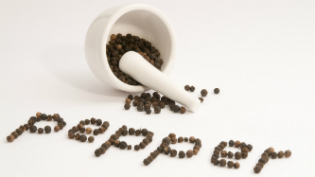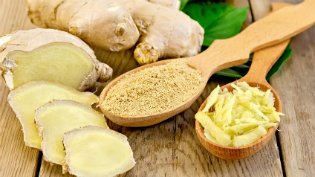
Health Benefits of Turmeric - The Sacred Indian Spice
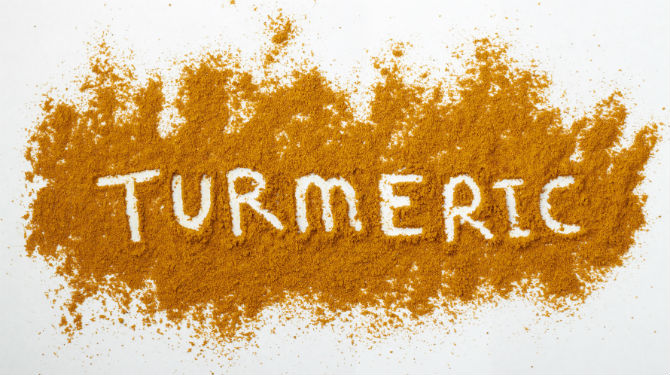
I am irregular in shape, yellowish brown on the outside and dull orange on the inside. I can be dried, grounded and powdered, I can stain your clothes, colour your foods and I am definitely edible. Who am I? Yes, you guessed it right. I am the bright yellow spice, commonly called as Haldi, found in every mom’s kitchen.
Turmeric is a product of Curcuma longa plant, a member of the Ginger family. The root/rhizome of the plant from which turmeric is derived is useful. Turmeric or haldi is being used since ages as a medicine, textile dye and food flavor enhancer. We have all applied haldi when we got ourselves bruised playing cricket or have applied haldi besan as a home remedy for good skin, but turmeric is known for other medicinal and healing properties too along with being associated with Indian tradition. Let’s get to know this mighty spice a little more in depth.
Turmeric Folklore
Traditionally, sindoor was made of turmeric, lime and water. This combination gave a beautiful red colour naturally, which is so much better than the commercial ones. Turmeric in the form of sindoor was known to give the wife the holy power of being absolutely loyal to her husband.’Mangalyaa’ meaning holy and auspicious was thus the name given to turmeric in Ayurveda. I wouldn’t be surprised if this article crosses a 100 likes and applying the traditional sindoor soon becomes trendy. Actually, the famous dialogue “Ek chutki sindoor ki kimat tum kya jaano Ramesh babu?” is now some-what understood.
And there’s more to turmeric and Indian culture and tradition. Turmeric along with gulaal is used to draw religious symbols, adorn Gods and guests. It is also used on wedding cards and applied on bodies of bride and groom before marriage as a sign of purity and prosperity. Married tamil women wear string smeared with turmeric, they also believe that a new garment marked with turmeric paste becomes auspicious. Pubertal ceremonies involved turmeric bathing.
If given a thought, you would realize that old rituals and customs had a reason behind them. Our oldies kept on following it without actually knowing the ‘why’ behind it. It’s only now that science has given fancy terms to it. So, what are the medicinal applications of this age old spice?
Turmeric - Medicinal Properties
Turmeric provides a bag full of health benefits. Curcumin (colouring agent ), volatile oil and curcuminoids are the bio-active ingredients in turmeric which are known to have potent pharmacological properties.
Anti-oxidant
We are exposed to high amount of pollution and stress of daily life. In response, free radicals are produced in our bodies which damage tissues, cell membranes, cause cancer, inflammation and other diseases. Curcumin neutralizes these free radicals and thus prevents aging. In-short, it helps us look younger and saves us from the not-so cost effective anti-ageing creams. It provides relief from joint pain, lowers oxidative stress and thus is also cardio-protective. The anti-oxidant property coupled with inhibition of cell proliferation, inducing death of cancer cells and detoxifying carcinogens gives this winter spice another tag – anti-cancer.
Liver is one of the most important organs of the body. It is involved in production, storage, metabolism, excretion and detoxification. Thus, liver itself needs to be serviced regularly for it to function properly. Curcumin detoxifies liver, improves liver lipid metabolism and balances cholesterol levels.
Antiseptic and antibacterial
Turmeric helps to heal wounds. Turmeric enhances activity and secretion of digestive enzymes and provides relief from gastric symptoms. Turmeric helps to enhance complexion by purifying blood and improving circulation. Turmeric has also been used since ages as an effective home remedy for cold and sore throat. It increases stress- induced decrease in serotonin levels, hence aids in depression. Turmeric helps boost metabolism thus aids in weight loss. Curcumin is also considered hypoglycemic since it improves insulin sensitivity and suppresses increase in blood sugar levels.
That’s a whole lot of reasons as to why one should consume turmeric. What more can one ask for? Well, turmeric also helps in Alzheimer’s disease, may be because of its anti-oxidant and anti-inflammatory activity.
Having read about medicinal properties, lets now get to know the ‘golden spice’ from inside.
Turmeric - Nutritional Properties
Turmeric contains 6% protein and 5% fat. Since it is of plant origin, it does not contain cholesterol. Turmeric contains 20g dietary fiber/100g and hence helps in improving lipid profile. Turmeric also contains good amount of minerals such as calcium, phosphorus, magnesium and iron which act as co-factors for various metabolic enzymes.
‘When two hands work together, the outcome is more pronounced’. Same is the case with our foods. Turmeric when accompanied with other dietary components gives better results. Piperin – the active component of black pepper increases bio-availability of curcumin. Turmeric is fat soluble. So, when consumed along with a meal containing enough healthy fats, turmeric gets easy entry into intestine.
Turmeric can be added to rice, curries, vegetables, lentils, can be used to flavour milk. You can also innovate with turmeric tea especially for this winter season and protect yourself from common viral infections.
A word of caution - food adulteration is a common practice. Turmeric powder can be adulterated with metanil yellow to enhance the colour. A simple kitchen test can reveal the purity. Dissolve turmeric powder in water and add few drops of acid. If the solution turns pink, even after dilution, it contains metanil yellow. Metanil yellow is carcinogenic if consumed over a long time. So, if you’re thinking of checking your kitchen haldi, do it right away.
To end with, let’s get to know some astonishing statistics and figures. Indian states of Tamilnadu and Sangli are the world’s greatest producers and trading centres for turmeric. India consumes 80% of its turmeric production! So, if you’re thinking of health and money in this field, you have made a wise decision.
